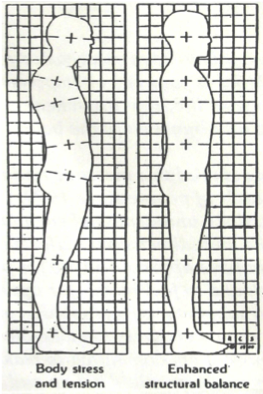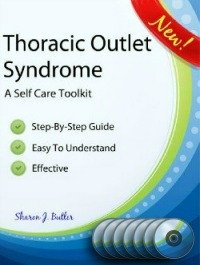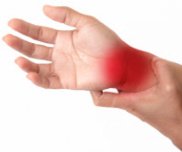How To Recover From Thoracic Outlet Syndrome

Recovery From TOS Is A Win-able Challenge
I won't sugar coat this. Recovering from Thoracic Outlet Syndrome is not an easy task. But it is possible to do if you educate yourself about the condition, how your body has changed leading to your symptoms, and you discover what works and what doesn't work for your body.
Of course, realizing early that you have a problem developing in your body is the best time to start any kind of recovery program. But we humans tend to ignore symptoms until they are screaming at us and by that time, the condition that is causing our pain has had the time to become more complex and more deeply entrenched in our bodies.
It's very important to be medically evaluated to rule out all possibilities that could cause your symptoms. Once that is completed, I think it is best to learn about all your medical options, and also to learn about all your non-medical options.
There are lots of resources online about all your medical options so I won't go into them here. But what I do want you to know about is your non-medical options because I think this is where you have the greatest personal power in regards to your condition. I want you to feel empowered to make good choices about your long term care and knowing that there are lots of positive things you can do to help yourself is the first step.
What You Need to Understand About TOS
How Your Anatomy Contributes to Your Thoracic Outlet Syndrome Injury
The thoracic outlet area of the body is a traffic jam of bones, muscles, nerves and blood vessels. It is this design that can lead to the difficulties and challenges of recovery.
The close proximity of all these elements make them very prone to developing adhesions, or stuck spots, between them. I believe this is the primary thing that causes the symptoms you experience with a TOS diagnosis. Muscles become glued together, or fibrotic in medical terms, limiting how much they can move, contract, or carry the weight of your head and shoulders.
Each muscle in your body has a unique job. No other muscle can do the task as well as the muscle designed for that job. There are no extra muscles and there are no muscles that can be done away with without seriously affecting the ability of the body to work efficiently.
When muscles become stuck together they begin to drag each other along as they contract, further adding to the strain and irritation they experience. The fascia that permeates those muscles and surrounds them starts to chemically change, becoming even stickier and creating even more problems. Sometimes the nerves that pass through this region become stuck in this mess and the thickening fascia and muscle begins to squeeze them and affect how they function. THe result? Compromised circulation and tingling and numbness.
Size Matters
If you consider the muscles (and its associated fascia) in the neck and shoulder region, you will realize that they are all very short in length and small in size. This means that they are very prone to being overstretched, overstimulated and irritated by overly aggressive motion, stretching, or exercise. Overstimulation can even happen in the course of receiving therapy. The tissues are so small, it is easy to overwhelm them. So your best bet is to stretch gently, slowly, and carefully. Utmost care has to be taken to avoid a flare up which can be so common in cases of TOS.
Releasing Adhesions
Releasing any adhesion is similar to peeling a sticky label off of a glass jar. It needs to be a slow process that is carefully carried out to avoid further damage. Most people do not inherently know how to slow things down in this manner so additional training in how to accomplish this is essential.
When releasing an adhesion along a nerve or blood vessel, I have found that it helps to approach the adhesion from multiple directions, and understanding the planes of fascia in which the nerves and blood vessels are embedded is very helpful. Stretch a little bit here, then stretch a little bit there and so on until the adhesion releases. If done properly, this process can proceed rather quickly. The Butler Method of Rapid Fascia Release teaches everything you need to know about accomplishing this kind of release safely.
Fear and TOS
Realizing all of a sudden that you have a serious problem going on can lead to a lot of fear. This is one of the first things that you have to learn to control. Fear, in and of itself, can make your symptoms feel significantly worse, and can cause you to make decisions about your care that you might regret later.
How do you control your fear? You educate yourself.
When you have a condition that affects your life as much as Thoracic Outlet Syndrome does, it is not a good idea to remain in the dark about the condition, what it is doing to your body, how your body has changed that lead to your symptoms and the options you have in dealing with your pain.
Many people have regretted the choices they have made about their care because they did not fully understand all their options and what those options could mean for them in the long run.
Your pain is a kind of language your body uses to tell you that something is wrong. if you can learn how to take the emotion of fear out of the equation, you can sometimes learn what the message is that is coming from your body. You may be able to determine where the pain is coming from, what parts of your body are affected by TOS, and what works and what doesn't work to help yourself feel better on a day-to-day basis.
It's All About Balance
Balance Your Posture

Our bodies crave balance. We work best when the structures of our bodies are balanced with good posture. So, if your body does not enjoy good posture, this is an important thing to correct.
When you slouch, or have stressful ways you use or hold your body (example: when you sit in a chair with one leg tucked under you), or have habits that lead to imbalance (example: consistently holding an infant on the same hip all the time), or any other unbalanced posture or holding pattern, the fascia in your body is forced to develop adhesions in an effort to create additional support for holding you up in the field of gravity.
Over time, those adhesions grow larger as more strain is added and more parts of your body become affected by your posture or holding pattern. Adhesions can also form because of accidents and other injuries and this can also affect your posture.
When your posture is out of balance and your fascia compensates, it becomes sticky and begins to adhere muscles together. It can also start sticking your nerves and blood vessels to neighboring structures as well and this can lead to the nerve and circulation problems that are so prevalent in TOS.
It is critically important to improve your posture any way you can.
The best solutions I know for correcting your posture is visiting any practitioner trained in Structural Integration, like Hellerwork, Rolfing, or KMI. Any school that is a member of the International Association of Structural Integrators (theiasi.org) will have graduates who understand how to correct posture problems as effectively and as quickly as possible. You can find a list of Structural Integration schools that have practitioner directories in the Resources section of this website.
 |
What's Wrong With This Picture? Notice the guy in the blue shirt in the front. His shoulders are raised, which raises his collarbone and compresses the nerve bundle between his collarbone and his first rib. See the people behind him? They are each leaning back, which encourages a slouched posture with a forward head, and by looking down, they are shortening their scalene muscles, particularly the anterior scalene which is responsible for most TOS symptoms. Now look at the man in the rear in the white shirt. His posture is encouraging a shortening of his sterno-cleido-mastoid muscles and his scalene muscles. This leads to compression of all the structures at the front and sides of the neck. A big no-no for TOS. |
Yoga, if you can tolerate the various positions in yoga, can also be great for helping restore good postural balance. Find an instructor who is familiar with upper body injuries who can help you get benefit without creating further damage to the fascia in your neck, shoulder, arms and hands.
MELT is a relatively new system of stretching, developed by a neuromuscular therapist, that can be very helpful as well. There are instructors of the MELT method all over the world. Find one in your area and take a workshop to learn the techniques so you can practice them on your own.
Balance Your Movement
Your body, particularly your fascia, requires movement to stay healthy and responsive. Movement is one of the most important ways to move fluid into the normally loose and fluid fascia and can significantly influence how your body responds to healing. Make sure you keep your tissues hydrated by moving them. Take a walk and swing your arms.
Try the Reverse Stretch to break up the habitual postures and movements that have glued your body and begun limiting your range of motion. Try a new sport. Take up dancing and have some fun. Not only will all these things help with your stress levels, you will be making your connective tissues healthier and more flexible, resilient, slippery and restored.
Balance Your Nutrition
Lots of people do not even think that what they put in their mouths can affect the pain and other symptoms they are experiencing. But more and more research is telling us that nutrition does indeed affect the body's ability to recover from injury and its response to pain.
One of the most helpful things you can do is to eat healthy. More fruits and vegetables, less sugar and processed foods is the cornerstone to good health. When your body has the nutritional support that it needs, it is capable of functioning as efficiently as possible.
Balance Your Hydration
I believe that fascia, when it is under stress or out of balance, can shift your body in a way that leads to your pain. Making sure that your fascia has what it needs to support you rather than cause you pain is an important step in your recovery.
Your fascia needs adequate hydration to operate at its optimum. This means it is very important that you drink enough good, clean water every day. It also means that you minimize the things that can lead to dehydration.
Coffee, alcohol, sugar and acidic foods can deplete your body of the water it needs for good hydration. Minimizing your intake of these foods and beverages can help your body retain as much fluid as it needs to keep your fascia operating at its best.
Balance Your Stress Levels
We all know that stress is a killer. Minimizing the sources of stress in our lives will yield many, many benefits that go beyond helping to recover from TOS. And there are many ways to minimize your stress levels.
Don't work too much. Work is stressful and spending too many hours at it can affect not only your health, but also your personal relationships, your sleep patterns and all the other aspects of your well being. Even if a long work schedule is imperative for you, find some time to focus on yourself.
A simple way to reduce stress is to pay attention to your breathing. Simply focusing on the in and out of your breath can have a very calming effect on your health. If you get a break during work hours, why not find a quiet place, sit down and focus your attention on your breathing? This is similar to many meditation techniques and can be very calming to your nervous system.
Get enough sleep. Even if you are experiencing discomfort from your TOS symptoms, it is important to get the sleep you need. One of my favorite things to do is to put two pillows into the same pillowcase, making one big fat roll to hold in front of your body as you lie on your side. When you drape your arm over that double pillow, it prevents the tissues at the front of your shoulder from being crushed by the weight of your arm. Try it to see if it helps you get better rest at night.
Take a walk outside. Nature is the best healer there is. Find a quiet park or a safe place to walk away the day's tensions. Allow your arms to swing as you walk to help release the tension that has built up in your arms over the course of the day. If your arms are too symptomatic to swing them, place your hand in a pocket and allow the other arm to swing as you walk. Make sure to allow your shoulders to drop by avoiding shoulder bags or purses.
The Most Important Step - Correct Your Fascia Imbalances
Changes to the fascia in your upper body is what is leading to impingement of your nerves and circulation in your upper body, arms and hands. There are lots of ways that you are perpetuating these changes by how you are using your body on a daily basis.
Keep in mind the whole subject of balance. Your body works best and remains problem free when you use your body in a balanced way. So, give some thought to how you use your body.
- Do you sit in a balanced way?
- Do you always use the same muscle groups in the sports you play? (Example: tennis and bicycle riding use the same muscle groups as you grip the tennis racket or the bicycle handlebars) It's better to mix things up!
- Have you developed poor habits because of an old injury or car accident?
- Does the furniture you use encourage imbalance? (Example: always propping your arm on the same arm of your sofa as you watch TV.)
The cool thing about fascia is that it is eager to return to a more balanced kind of functioning. So if you give it the opportunity by using your body in a more balanced way, it will comply.
The problem arises when you have caused enough stress in the fascia that it has become thicker, stickier and more resistant to change. Now, because you have ignored what is going on in your body for an extended period of time, your fascia begins to affect neighboring muscles, blood vessels and nerves. Once you have reached that level of involvement, additional help is needed.

Click HERE to Learn More
This is where a tool like the Thoracic Outlet Syndrome Self Care Toolkit can offer you the support you need to make the changes in your fascia that will lead to fewer symptoms and better function of your fascia overall. Using the simple techniques in the Toolkit, you can restore your fascia back to its original state, giving the body the opportunity to heal itself of the conditions that lead to Thoracic Outlet Syndrome in the first place. You can learn more about the TOS Self Care Toolkit HERE.
It's important to integrate as many positive changes in your lifestyle as possible in order to have the best and fastest recovery from Thoracic Outlet Syndrome. Just keep in mind that your body craves balance in all things and choose how you use and care for your body with that in mind. Your body has amazing capability to restore itself to health and balance if it is given the chance to do so.
Additional Information Important To Your Recovery From TOS
Check out all the following links to best prepare yourself for the recovery you desire.
Fascia - Understand the connective tissue that is the source of nearly all your symptoms
Fascia Anatomy - When you understand what makes up this tissue and how it works, you can begin to change it
Adhesions - The changes in fascia that are causing all your symptoms
Scar Tissue - Extreme adhesions that result from surgeries, cuts, tears and other trauma
Fascia and Nerves - Learn how fascia can affect the nerves, the brachial plexus in particular
Stretching Fascia - How to get this important tissue to return to a more normal state that eliminates symptoms
Brachial Plexus - The nerve bundle that is the source of Thoracic Outlet Syndrome
Collarbone - One of the prime areas causing the symptoms of TOS
Scalene Muscles - Learn about the most common site of interference with the brachial plexus nerve bundle in TOS
First Rib - Understand how it moves into a position that leads to TOS
Pectoralis Minor - What it is, what it does, and why it plays a role in Thoracic Outlet Syndrome
Thoracic Outlet Syndrome - Basic information about the condition that leads to pain, numbness and circulation issues in the arms and hands.
Click the block below that most closely matches your injury for more information and to find the Toolkit we offer to help you in your recovery.







